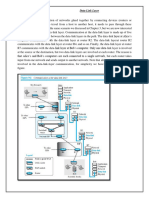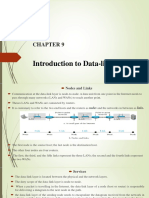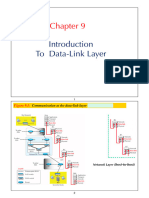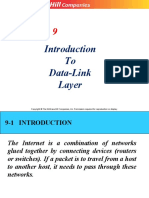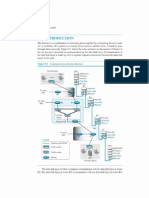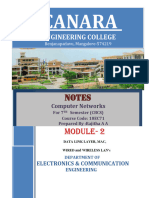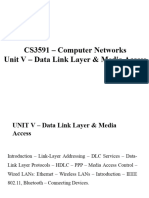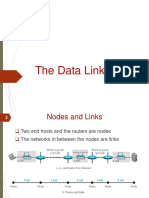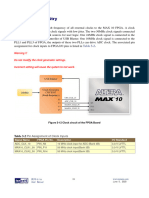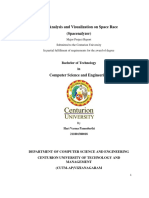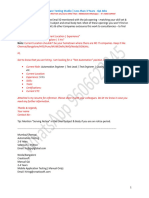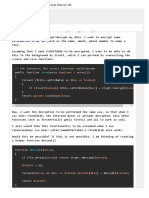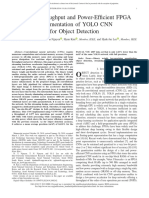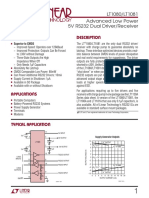0% found this document useful (0 votes)
36 views33 pagesData Communication Lecture 11
The document discusses data communication at the data link layer. It defines key concepts like nodes, links, and the services provided by the data link layer, including framing, flow control, error control, and addressing. The data link layer is divided into two sublayers: the data link control sublayer and the media access control sublayer. It also discusses three types of link layer addresses - unicast, multicast, and broadcast - and how the Address Resolution Protocol (ARP) maps IP addresses to link layer addresses.
Uploaded by
Dipak GawaliCopyright
© © All Rights Reserved
We take content rights seriously. If you suspect this is your content, claim it here.
Available Formats
Download as PPTX, PDF, TXT or read online on Scribd
0% found this document useful (0 votes)
36 views33 pagesData Communication Lecture 11
The document discusses data communication at the data link layer. It defines key concepts like nodes, links, and the services provided by the data link layer, including framing, flow control, error control, and addressing. The data link layer is divided into two sublayers: the data link control sublayer and the media access control sublayer. It also discusses three types of link layer addresses - unicast, multicast, and broadcast - and how the Address Resolution Protocol (ARP) maps IP addresses to link layer addresses.
Uploaded by
Dipak GawaliCopyright
© © All Rights Reserved
We take content rights seriously. If you suspect this is your content, claim it here.
Available Formats
Download as PPTX, PDF, TXT or read online on Scribd
/ 33




